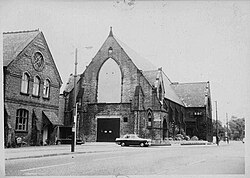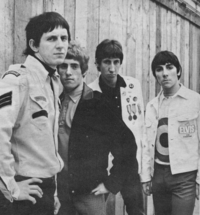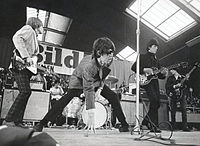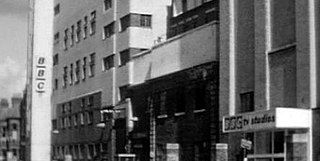
Lime Grove Studios was a film, and later television, studio complex in Shepherd's Bush, West London, England.

Top of the Pops (TOTP) is a British music chart television programme, made by the BBC and broadcast weekly between 1 January 1964 and 30 July 2006. The programme was the world's longest-running weekly music show. For most of its history, it was broadcast on Thursday evenings on BBC One. Each show consisted of performances of some of the week's best-selling popular music records, usually excluding any tracks moving down the chart, including a rundown of that week's singles chart. This was originally the Top 20, though this varied throughout the show's history. The Top 30 was used from 1969, and the Top 40 from 1984.

Rusholme is an area of Manchester, England, two miles south of the city centre. The population of the ward at the 2011 census was 13,643. Rusholme is bounded by Chorlton-on-Medlock to the north, Victoria Park and Longsight to the east, Fallowfield to the south and Moss Side to the west. It has a large student population, with several student halls and many students renting terraced houses, and suburban houses towards Victoria Park.

BBC North West Tonight is the BBC's regional television news programme covering North West England and the Isle of Man. Produced by BBC North West, the programme broadcasts from the BBC's MediaCityUK studios at Salford Quays, with district newsrooms based in Liverpool, Blackburn and Chester.

Xaverian College is a Roman Catholic college in Manchester, England, two miles south of the city centre in Rusholme. Established in 1862, Xaverian College has become one of the most oversubscribed Sixth form college in Greater Manchester, along with Loreto College and Ashton Sixth Form College. It consistently ranks in the top 10 facilities for 16-18 education. Xaverian College is a member of the Association of Colleges. As of 2019, the acceptance rate is 30%.

The Curry Mile is a nickname for the part of Wilmslow Road running through the centre of Rusholme in south Manchester, England. The name is earned from the large number of restaurants, takeaways and kebab houses specialising in the cuisines of South Asia and the Middle East, thought to be the largest concentration of South Asian restaurants in the United Kingdom. The Curry Mile is notable for its streets being busy into the early hours of the morning. The area is frequently visited by local students, because of its location near the Oxford Road and Fallowfield Campuses of the University of Manchester, Xaverian College and the Oxford Road/All Saints campus of the Manchester Metropolitan University.
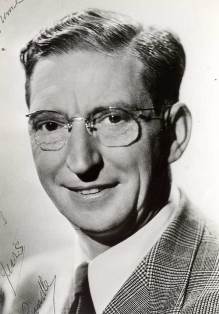
Frank Randle was an English comedian. A contemporary of fellow Lancastrians George Formby and Gracie Fields, he was regarded as more subversive.
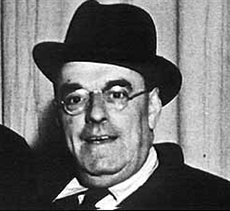
John E. Blakeley was a British film producer, director and screenwriter, the founder of Mancunian Films.

Mancunian Films was a British film production company first organised in 1933. From 1947 it was based in Rusholme, a suburb of Manchester, and produced a number of comedy films, mostly aimed at audiences in the North of England.
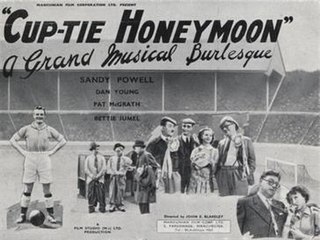
Cup-tie Honeymoon was the first motion picture to be filmed at the Dickenson Road Studios by the Mancunian Film Corporation in 1948, themed around football.

BBC North (Group) is an operational business division of the BBC.

BBC North West is the BBC English Region serving Cheshire, Greater Manchester, Lancashire, Merseyside, North Yorkshire, Derbyshire, Staffordshire, Cumbria and the Isle of Man.

BBC Manchester is the BBC's regional headquarters for the north west of England, the largest BBC region in the UK. BBC Manchester is a department of the BBC North Group division. The BBC considers the Manchester department as one of its three main national bases alongside London and Bristol, and has had a presence in the city since launching the 2ZY radio station in 1922. The BBC had its first studio outside London in 1954 when the corporation leased the Dickenson Road Studios. In 1967, the decision was taken to build a purpose-built BBC building in Manchester on Oxford Road which opened in 1976.
This is a list of British television related events from 1964.

Media in Manchester has been an integral part of Manchester's culture and economy for many generations and has been described as the only other British city to rival to London in terms of television broadcasting. Today, Manchester is the second largest centre of the creative and digital industries in Europe.

New Broadcasting House (NBH) was the BBC's North West England headquarters on Oxford Road in Chorlton-on-Medlock, Manchester. The studios housed BBC Manchester, BBC North West, the BBC Philharmonic Orchestra and the BBC Religion and Ethics department. It was known as a Network Production Centre, the others being in Birmingham and Broadcasting House, Bristol.
This is a summary of 1964 in music in the United Kingdom, including the official charts from that year.
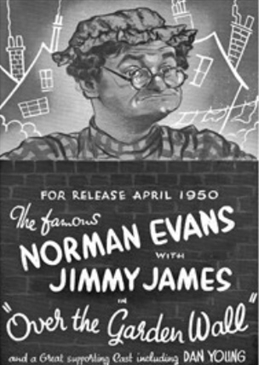
Over the Garden Wall is a 1950 British "B" comedy film directed by John E. Blakeley and starring Norman Evans, Jimmy James and Dan Young. Although made on a low budget, the film often topped double bills at cinemas in the North of England because of the popularity of the performers.
The first episode of Top of the Pops was broadcast on Wednesday, 1 January 1964, at 6:35pm.
